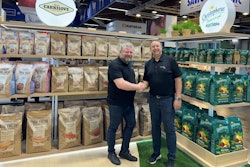The North American Renderers Association (NARA) acknowledges the mention of rendering in the recently released Final Strategy for Reducing Food Loss and Waste. However, NARA is significantly concerned that the strategy fails to fully appreciate the rendering industry's substantial contributions to waste reduction, specifically diverting 54 million pounds of raw material from landfills each year.
"The Final Strategy appears to favor certain technologies over others, benefiting from new agency funding and research initiatives, and disadvantaging existing technologies," stated Kent Swisher, NARA president and CEO. "This approach does not advance the goal of halving food loss and waste (FLW) and reducing greenhouse gas emissions by 2030. Instead, it incentivizes shifting the food waste supply stream from one industry to another, to the detriment of renderers who are already making significant impacts."
To ensure that rendering is included in the national strategy, NARA urges the Environmental Protection Agency (EPA) to revise its Wasted Food Scale to reinstate rendering as a key waste management strategy. The current exclusion of rendering from the scale overlooks a vital component of the circular economy, significantly contributing to waste reduction. NARA supports the sentiments expressed in a letter led by Senators Marshall and Bennet, and signed by Agriculture Committee Chairwoman Stabenow and Ranking Member Boozman, urging the EPA to update the Wasted Food Scale. This highlights the critical need for an inclusive and comprehensive approach to waste management.
The best way to achieve America’s food loss and waste goals is to adopt a results-oriented, technology-neutral approach. The administration can demonstrate its commitment to involving all relevant stakeholders by revising the Wasted Food Scale to include the rendering industry, recognizing its role as the largest recycler of organic material. Prioritizing other technologies over rendering could actually increase the carbon footprint of our food system and harm the environment.
The administration should avoid promoting and encouraging the adoption of the Wasted Food Scale by state and local governments when it is incomplete and not based on a comprehensive analysis of all relevant waste management pathways. An effective national strategy must recognize and incorporate all viable solutions, including rendering, to foster a sustainable circular economy.
NARA respectfully calls on the administration and relevant agencies to revise their strategies and policies to fully integrate rendering as a recognized and supported method of reducing food loss and waste.








